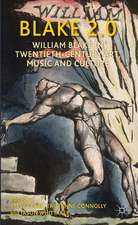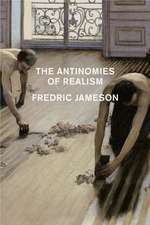The Evolution of the French Courtesan Novel: From de Chabrillan to Colette
Autor Courtney Sullivanen Limba Engleză Hardback – 23 iun 2016
This book is about the autobiographical fictions of nineteenth-century French courtesans. In response to damaging representations of their kind in Zola and Alexandre Dumas' novels, Céleste de Chabrillan, Valtesse de la Bigne, and Liane de Pougy crafted fictions recounting their triumphs as celebrities of the demi-monde and their outcries against the social injustices that pushed them into prostitution. Although their works enjoyed huge success in the second half of the nineteenth century, male writers penned faux-memoirs mocking courtesan novels, and successfully sowed doubt about their authorship in a backlash against the profitable notoriety the novels earned these courtesans. Colette, who did not write from personal experience but rather out of sympathy for the courtesans with whom she socialized, innovated the genre when she wrote three novels exploring the demi-mondaine’s life beyond prostitution and youth.
Preț: 417.30 lei
Nou
Puncte Express: 626
Preț estimativ în valută:
79.88€ • 86.79$ • 67.14£
79.88€ • 86.79$ • 67.14£
Carte tipărită la comandă
Livrare economică 21 aprilie-05 mai
Preluare comenzi: 021 569.72.76
Specificații
ISBN-13: 9781137597083
ISBN-10: 1137597089
Pagini: 127
Ilustrații: IX, 127 p.
Dimensiuni: 148 x 210 x 10 mm
Greutate: 0.32 kg
Ediția:1st ed. 2016
Editura: Palgrave Macmillan UK
Colecția Palgrave Macmillan
Locul publicării:London, United Kingdom
ISBN-10: 1137597089
Pagini: 127
Ilustrații: IX, 127 p.
Dimensiuni: 148 x 210 x 10 mm
Greutate: 0.32 kg
Ediția:1st ed. 2016
Editura: Palgrave Macmillan UK
Colecția Palgrave Macmillan
Locul publicării:London, United Kingdom
Cuprins
Acknowledgments.- Introduction.- 1.- The Case for the Courtesan Novel Sub-Genre: Counter-Discourse and Intertextuality in de Chabrillan, de la Bigne, and de Pougy.- 2. De Pougy’s Innovative Courtesan Fiction.- 3. Co-Opting the Courtesan Persona in the Faux Mémoires de Rigolboche and Les Usages du demi-monde.- 4. Colette’s Courtesan Fiction: The Final Evolution.- Conclusion.- Notes.- Works Cited.- Index.-
Recenzii
“The Evolution of the French Courtesan Novel makes an important contribution to feminist approaches to French literature. Not only does Sullivan’s study postulate a new category, but it makes a convincing case for the construction of a discourse that counters, in a way that was apparently threatening to male writers, the hegemonic male discourse surrounding fictions of the sex worker.” (Carol Mossman, H-France Review, Vol. 17 (40), August, 2017)
Notă biografică
Courtney Sullivan is Professor of French at Washburn University, USA.
Textul de pe ultima copertă
‘Sullivan’s outstanding book is the first to show how French courtesans were fully-fledged masters of the pen as well as proverbial ladies of the night. We learn how their rewriting of classics such as The Lady of the Camellias and their response to a male “backlash” inspire Colette in previously unseen ways.’ — Nicholas White, University of Cambridge, UK
This book is about the autobiographical fictions of nineteenth-century French courtesans. In response to damaging representations of their kind in Zola and Alexandre Dumas' novels, Céleste de Chabrillan, Valtesse de la Bigne, and Liane de Pougy crafted fictions recounting their triumphs as celebrities of the demi-monde and their outcries against the social injustices that pushed them into prostitution. Although their works enjoyed huge success in the second half of the nineteenth century, male writers penned faux-memoirs mocking courtesan novels, and successfully sowed doubt about their authorship in a backlash against the profitable notoriety the novels earned these courtesans. Colette, who did not write from personal experience but rather out of sympathy for the courtesans with whom she socialized, innovated the genre when she wrote three novels exploring the demi-mondaine’s life beyond prostitution and youth.
This book is about the autobiographical fictions of nineteenth-century French courtesans. In response to damaging representations of their kind in Zola and Alexandre Dumas' novels, Céleste de Chabrillan, Valtesse de la Bigne, and Liane de Pougy crafted fictions recounting their triumphs as celebrities of the demi-monde and their outcries against the social injustices that pushed them into prostitution. Although their works enjoyed huge success in the second half of the nineteenth century, male writers penned faux-memoirs mocking courtesan novels, and successfully sowed doubt about their authorship in a backlash against the profitable notoriety the novels earned these courtesans. Colette, who did not write from personal experience but rather out of sympathy for the courtesans with whom she socialized, innovated the genre when she wrote three novels exploring the demi-mondaine’s life beyond prostitution and youth.

















